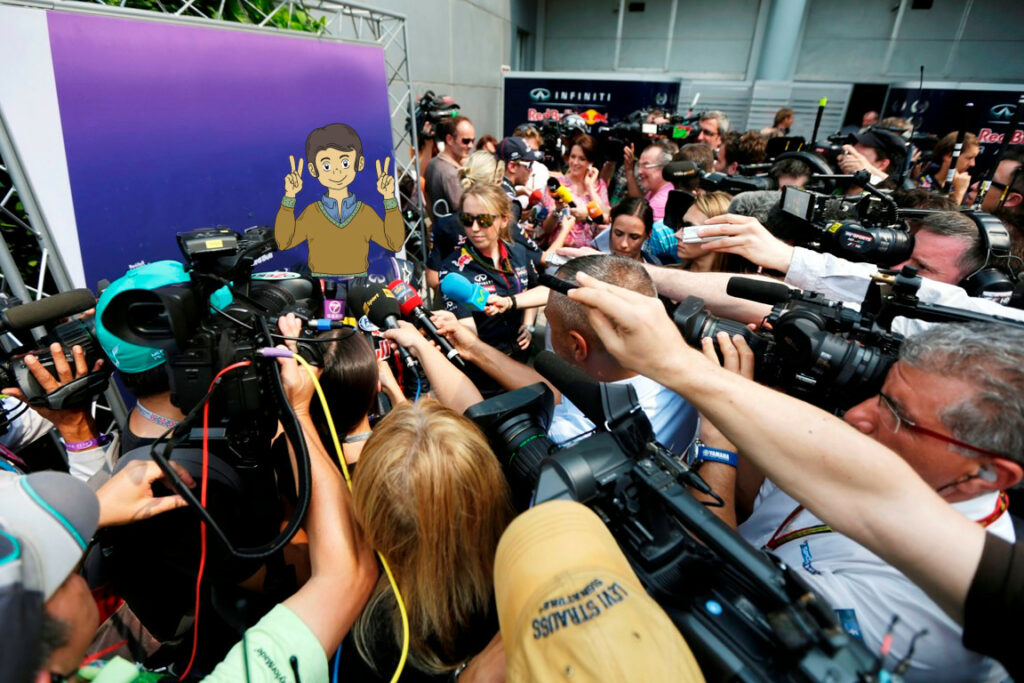Let me start with a question: You wouldn’t start a race without having walked the track, done the practice sessions, and set up your car, right? So why would you want to give an interview to the media without having practiced or even just prepared for it?
As a race driver, talking to the media is part of the job. In many series, it is part of the regulations and even without this requirement, it makes sense to be publicly heard because if nobody knows you, how will you find your next seat or sponsor? Talking to the media needs to be part of your routine like improving your driving skills and physical fitness.
However, it is not as easy as it sounds. Talking publicly, no matter where, needs preparation because it can make or break your reputation or even your career. There are a few natural talents out there who instinctively know what to say and how to say it, but the vast majority need to learn the skills of giving interviews.
I know from experience that many youngsters under the age of 16 with a couple of seasons in junior motorsport don’t think about giving interviews. Yet it happens all the time. And when it happens to you, you want to be prepared.

Here are five steps that will help you get started.
Know the purpose
You have been asked to do an interview. Before you accept, ask yourself what’s the purpose? Is it because you want to become more known, to gain followers, to make a sponsor happy or simply because your series expects you to? There are many reasons, make sure you know yours because that will set your messaging.
Prepare the interview
What is the media outlet? Is it a sports publication, a general newspaper, a lifestyle magazine? Depending on the media type, the questions will be different. It is OK to ask the journalist for the broad subject of their interview, but you cannot expect to receive all the questions in advance. However, the general topic is usually sufficient to put together facts and figures that can help you answer. Then think about your message and what you want the journalist to take away from the interview.
Prepare yourself
So now you know what to say. Next, you need to think about how you say it. Body language is important, as is your tone of voice, how fast (or slow) you speak, and even what you wear. Make sure you come across as dynamic but avoid talking too fast or moving too much. If possible, go to a quiet area where you and the journalist will be undisturbed. If it is a video call, use a clean background with the light coming from the front.
Some Interview techniques
Try to establish a friendly atmosphere right from the start by talking briefly about things unrelated to the interview. Once the interview starts, listen carefully to the question and try to answer it as long as necessary but as briefly as possible. Rule of thumb: no more than one minute per answer. If you need a moment to think about your answer, you can use a neutral sentence like ‘That’s a good question’. This will give you a few moments to think about what to say. If you get a question you don’t know the answer to, say so. And remember that everything you say, from the moment you meet the journalist until they leave, can be used in their story.
At the end of the interview, ask if they have all information, offer to send photos or other material you talked about, and ask when the story will be published.
Learn from a professional
You can of course practice your interview skills with a friend or a family member, but if you want to gain time and avoid mistakes ask a professional who works with the media every day.
A communications expert will adapt to your requirements and take your experience into account. They will work through your messaging, correct your body language, teach you interview techniques, and work on any issues you might have like being uncomfortable in front of a camera.
If English isn’t your first language, you should consider doing the interview training in English nevertheless, as it is the international language of motorsport. If your level of English isn’t good enough for that purpose, take some general lessons first.
A final recommendation
Start as soon as possible. If you are old enough to race in karting, you are old enough to learn interview techniques. This gives you lots of opportunities to practice, so when you eventually reach a series with a big following, you are prepared.
And whatever you do, don’t underestimate the power of the spoken word, and don’t wing it.






